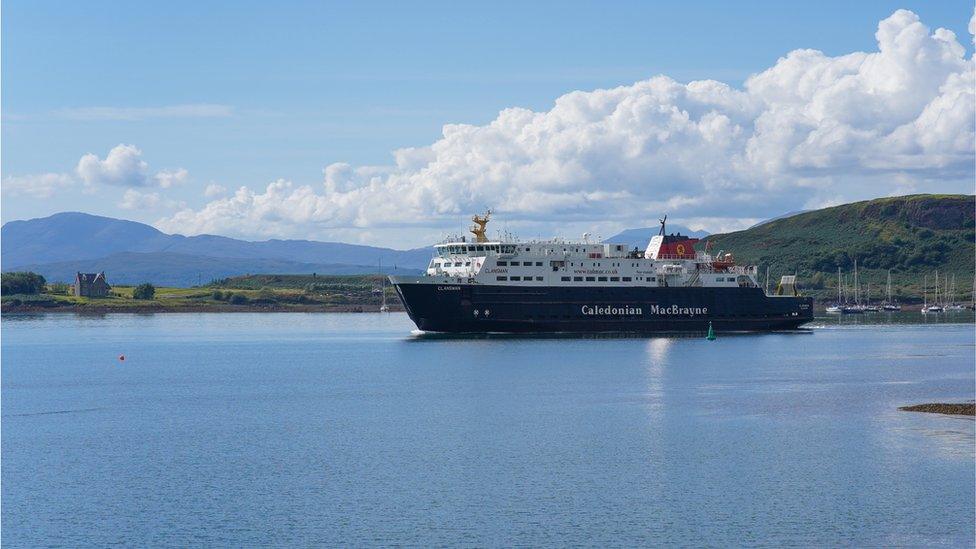CalMac ferry passengers could face delays due to ageing fleet
- Published

Scotland's main ferry operator has warned passengers could face disruption this summer as a result of its ageing fleet.
CalMac said the peak tourist period is a test for the 32 ferries that serve 51 ports on 49 routes.
The average age of ferries serving routes from Arran in the south to Lewis in the north is just under 22 years.
Last year CalMac carried more than five million passengers, nearly 1.5 million cars and some 80,000 coaches.
It also accommodated just under one million metres of commercial traffic.
Older vessels
New interim managing director Robbie Drummond forecast this year will be the busiest on record.
He said: "We ask a lot of our fleet, and indeed our people, at the busiest time of year on our network.
"I know everyone here is ready and eagerly anticipating another successful summer season, but I am also very conscious of the workload our boats will be undertaking and the strain that puts them under, particularly the older vessels in the fleet, eight of which are more than 30 years old now."
Mr Drummond apologised for the temporary removal of the MV Hebridean Isles from the Islay services to cover for the MV Clansman, which is currently in dry dock awaiting the return of the propulsion unit sent to Denmark for repairs.
He added: "We know that locals and visitors alike have come to expect the more regular service and greater capacity provided by two boats, so we understand people's frustration when one of those vessels needs to be deployed elsewhere."
'Significant' breakdown risk
The operator said any issue with a vessel on one part of the network will have knock-on effects for other routes, as boats need to be diverted or deployed elsewhere to keep the lifeline network running.
A CalMac spokesman said: "The working life expectancy of a ferry deployed on routes like those on Scotland's western seaboard is around 25 years, so with nearly half of the ferries working these routes already beyond that milestone - and having been used intensively during those years of service - the risk of mechanical failures and breakdown is significant.
"It also takes longer to get older boats back into service when things do go wrong, often due to the difficulty in sourcing parts across Europe."